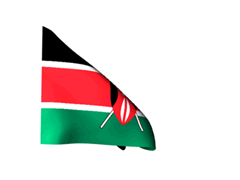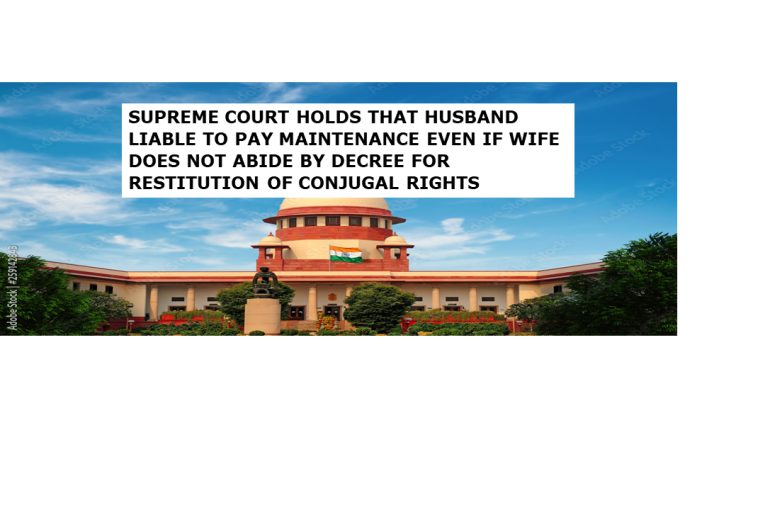SUPREME COURT HOLDS THAT PLEA OF JUVENILITY CANNOT BE IGNORED ON GROUNDS OF CASUAL ADJUDICATION
A Division Bench of the Hon’ble Supreme Court consisting of Justice M.M Sundresh and Justice Aravind Kumar delivered the landmark judgement Om Prakash vs. Union of India and Ors. 2025 Criminal Appeal No. 4229 of 2024 (Arising out of SLP (Crl.) No.(s) 2214 of 2022) which addressed the pertinent issue of juvenility in India. The Court addressed the failure of the justice system in acknowledging the juvenility of the Appellant despite evidence which supported his claim.
FACTS
Om Prakash i.e. the Appellant was charged for the offence of culpable homicide amounting to murder which was alleged to have occurred on 15.11.1994. In 2001 a statement under Section 313 (Power to examine the Accused) of the Code of Criminal Procedure,1973 (CrPC) was made before the ld. Trial Court according to which the Appellant gave his personal details wherein he also added that he was 20 years old as on 07.03.2001. The Appellant had also included that he had opened a bank account of his own and a cheque book had been issued for the same.
Upon his conviction for the said offence, the Appellant raised the plea of juvenility that he was 17 years old at the time of commission of the offence during the hearing of the sentence by the Trial Court. The ld. Trial Court presumed that he was a major on the basis of the statement regarding his bank account and sentenced him to death as a result of the grave nature of his crime. On being aggrieved, the Appellant filed an appeal before the Hon’ble Uttarakhand High Court wherein he was represented by an Amicus Curiae (An individual or organisation who has no bearing on a case but is permitted to assist the Court to present findings or submissions that impacts the issues of the case) and raised the plea that he needed to be tried by a Juvenile Court on account of his age during the commission of the offence. However , the High Court relied upon the arguments made by the Trial Court and this matter was dismissed. Therefore, this matter reached the Hon’ble Supreme Court, where in order to prove that he was a minor while committing the offence, the Appellant presented a birth certificate which was issued by the Dariya Para Bodinath Board School dated 28.04.2001 which confirmed his age. However, the Supreme Court agreed with the views expressed by the learned Trial Court and High Court resulting in the Appellant filing a Review Petition.
The Appellant laid down that the bank account under his name was opened by his deceased employer and that he was a minor at the time of committing the offence, however the Review Petition was dismissed by the Supreme Court. The Appellant later filed a Mercy Petition before the Hon’ble Governor of the State of Uttarakhand which was rejected.
Later, the Appellant’s parents supported by a social worker, filed a Writ Petition under Article 32 (Right to Constitutional Remedies) of the Constitution before the Hon’ble Supreme Court which included copies of his school certificate dated 19.06.2003 from the headmaster and a transfer certificate dated 28.04.2001 which acted as proof of the Appellant’s age. However, this Writ Petition was dismissed on 16.02.2005 after which the Appellant filed a Curative Petition before the Hon’ble Supreme Court. Respondent No. 2 had also verified the school certificate, issued by the Dariya Para Bodinath Board School thereby proving that the Appellant was 14 years of age when he committed the offence. However, this Curative Petition was dismissed by an Order dated 06.02.2006.
After the amendment in 2000 of the Juvenile Justice (Care and Protection of Children) Act (The 2000 Act), Section 7-A (Procedure to be followed when claim of juvenility is raised before any Court) was incorporated into the Act, whereby which the Appellant’s mother filed a Mercy Petition before the Hon’ble President of India. The Appellant also made an application before the Medical Board of the Meerut Jail whereby which an Ossification Report [1]was filed as well as a Medical Age Certificate was issued which held that he was 14 years old at the time of committing the offence.
The Hon’ble President issued a Presidential Order dated 08.05.2012, which commuted the sentence of the Appellant from death to life imprisonment with a condition that he shall remain in jail until he is 60 years of age.
The Appellant filed a Writ Petition in 2019 before the learned Uttarakhand High Court challenging the Presidential Order on the basis of Section 9 (2) (Procedure to be followed by a Magistrate who has not been empowered under the Act) of the Juvenile Justice (Care and Protection of Children) Act 2015 (2015 Act) which was dismissed by the High Court citing that the power of judicial review over an executive decision performed under Article 72 of the Constitution was limited and that the proceedings against the Appellant were final in nature. Therefore , Criminal Appeal No. 4229 of 2024 (Arising out of SLP (Crl.) No.(s) 2214 of 2022) was filed by the Appellant before the Hon’ble Supreme Court.
ISSUE
- Whether the Appellant was a minor at the time of commission of the offence
- Whether judicial finality had been attained under Section 9 (2) of the 2015 Act
DECISION OF THE HON’BLE SUPREME COURT
The Hon’ble Supreme Court perused all the facts and available documents that were on record which aided them in reaching the conclusion that the Appellant was 14 years of age at the time of commission of offence. The Supreme Court also held that the approach followed by the learned Trial Court and the High Court in the earlier rounds of litigation was riddled with injustice as it had cast a blind eye to the evidence and submissions made by the Appellant. The Court also held that the statement under Section 313 CrPC cannot be relied upon by the lower Courts as it declared that the Appellant was 20 years old, thereby making him 14 years old during the time of commission of the offence. It was further observed that neither did the bank account nor the statements given by the Appellant have any relevance under the statutes related to the said offence since he was a minor under the 2000 and 2015 Acts. It was also noted that the learned High Court had erred in its reasoning as the Supreme Court held that the procedures mandated by the 2000 and 2015 Act , as well as the existing State rules were not duly followed. The Hon’ble Supreme Court ultimately set aside the sentence laid down by stating that it is not a review of the Presidential Order as the Court is merely concerned with applying relevant laws i.e. the 2015 Act and ensuring that the Appellant can avail benefits under it. The Court further ordered the Uttarakhand Legal Services Authority to ensure that the Appellant is able to reintegrate into society as an active member upon release after 25 years of solitary confinement to make up for lost time.
CONCLUSION
The Hon’ble Supreme Court passed a landmark judgement which addressed the systemic failures of the judiciary which led to denial of justice for the Appellant and emphasised on the role of the judiciary in safeguarding the rights of juveniles.
PARVATI ARUN
INTERN
INDIAN LAWYER AND ALLIED SERVICES
PLEASE VIEW OUR YOUTUBE CHANNEL THE INDIAN LAWYER LEGAL TIPS TO WATCH VIDEOS ON DIFFERENT ASPECTS OF THE LAW.
THE CURRENT EPISODE IS ON ‘UNDERSTANDING LEASE AGREEMENTS’ WHICH CAN BE VIEWED ON https://youtu.be/dzxKUx9qh9M?si=22GhuEYb1Sa_RLXX
[1] An Ossification Report is a medical report that provides an estimate of a person’s age based on the degree of fusion of their bones. It is created after an ossification test, which involves taking X-rays of bones to assess their development.





































Leave a Reply